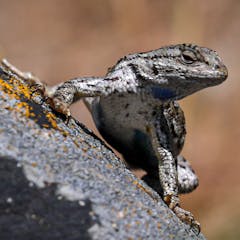
Articles on Mammals
Displaying 1 - 20 of 167 articles

Blink and you’ll miss it. The kowari is a charismatic marsupial carnivore that needs our help.

Does size matter? In the animal kingdom, yes.

Bird flu is decimating species already threatened by climate change and habitat loss.

Research has revealed how British otters may have been able to recover from species loss in the 1950s with the help of otters from Asia.

We need every tool at our disposal to stop feral cats and foxes from decimating Australia’s incredible wildlife after fires. Artificial refuges show promise.

New research suggests the gut bacteria of red and grey squirrels differ significantly, potentially explaining the decline of the native red and the success of its grey counterpart.

Australia has already lost so many wonderful mammal species. Do we want the southern greater glider to suffer the same fate?

Maths plays a crucial role in new research which finds that bats “leapfrog” their way home at night.

Antechinuses are tiny marsupials famous for their intense sex lives. Now, researchers have documented another unusual behaviour – the cannibalism of their own species.

Researchers have made a fascinating observation: a polar bear used a diving hunting technique, never before reported, to capture large moulting snow geese.

Our mammal ancestors evolved to compete with dinosaurs but may have lost something in the process.

A newly described fossil from South Australia is making waves in our understanding of where and when whales evolved titanic body sizes.

From dark dragonflies becoming paler to plants flowering earlier, some species are slowly evolving with the climate. Evolutionary biologists explain why few will evolve fast enough.

New research looks at how different species have managed to cross geographic barriers throughout history and whether their individual traits played a crucial role in these journeys.

A supercontinent could raise global temperatures to such a degree that it could wipe out mammals.

New findings from the La Brea Tar Pits in southern California suggest human-caused wildfires in the region, along with a warming climate, led to the loss of most of the area’s large mammals.

With more than one species for every person on the planet, soils are the most diverse habitat on Earth.

From the cuscus with the fancy coat, to the wallaby often sporting a single white glove, a wide variety of life evolved on island homes in the south-west Pacific.

Their drawings did not reflect the make up of the natural world.

New research shows that placental mammals survived the mass extinction that killed the
dinosaurs.
